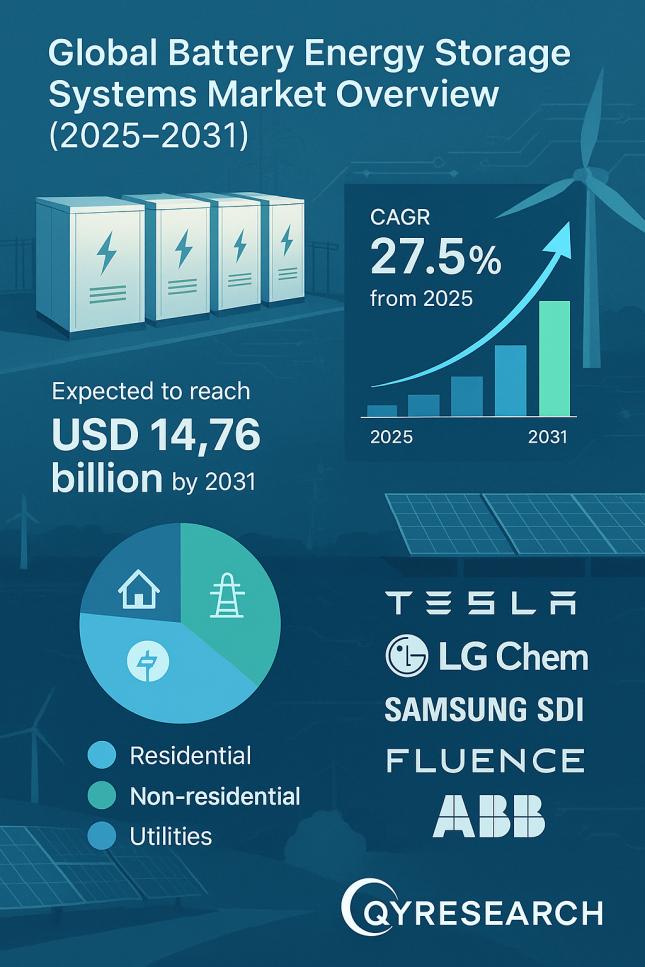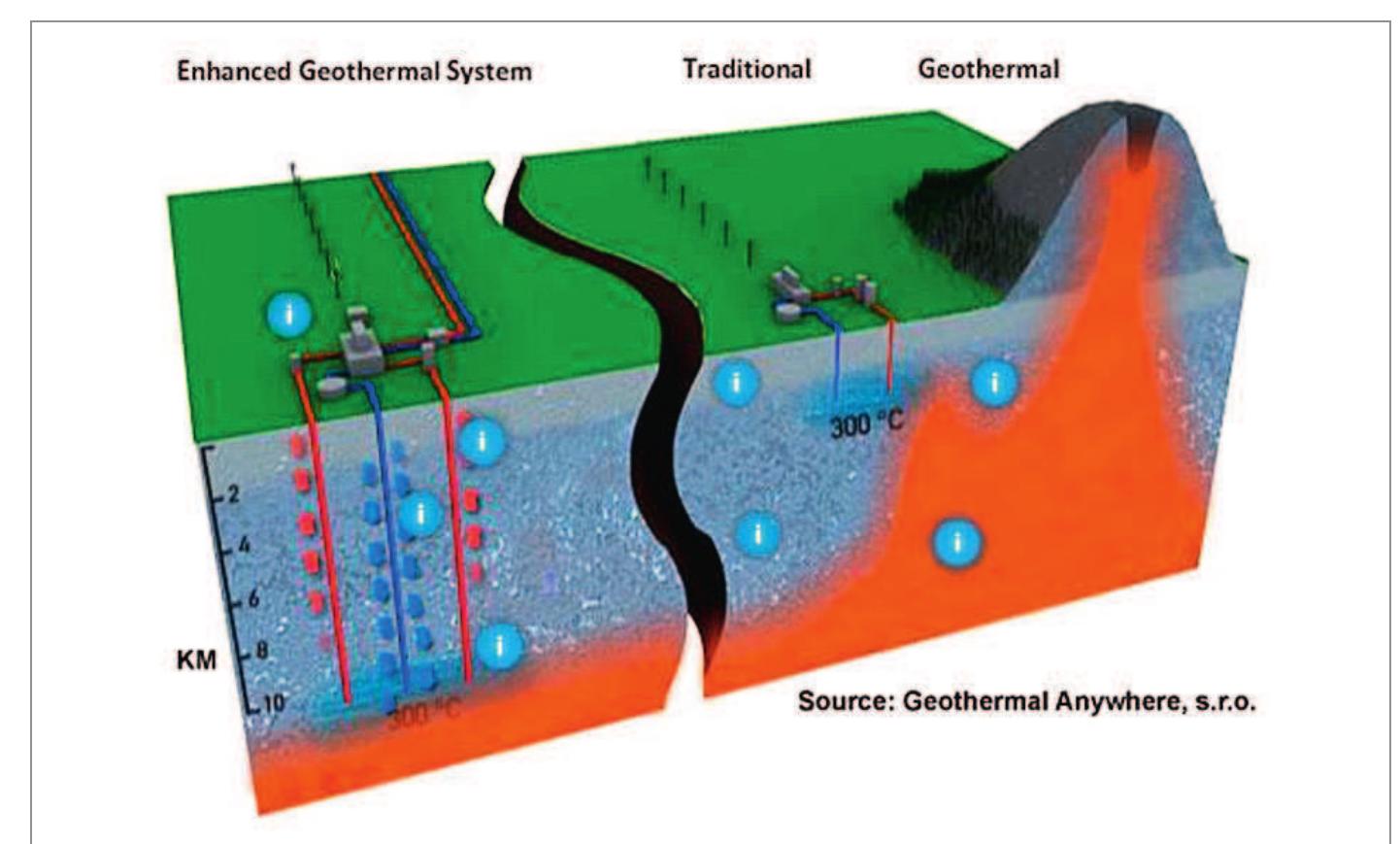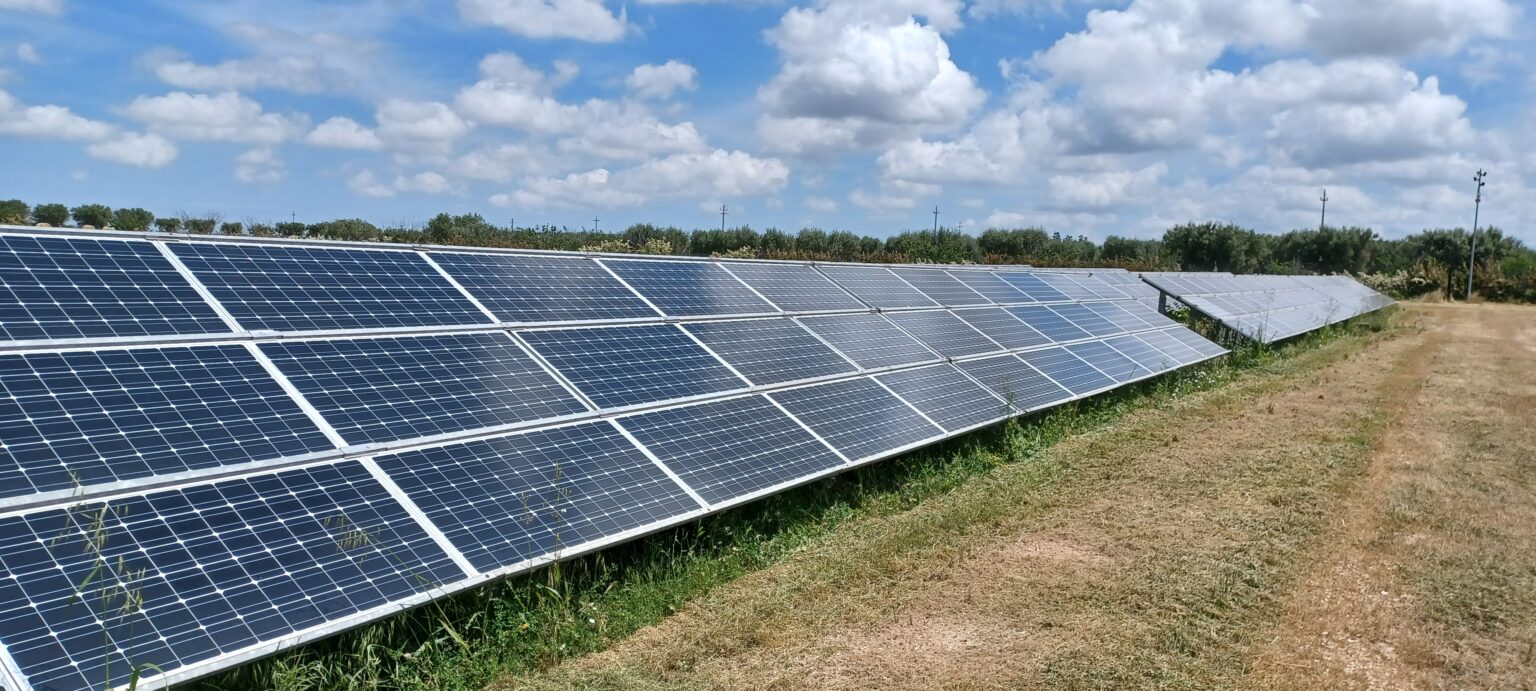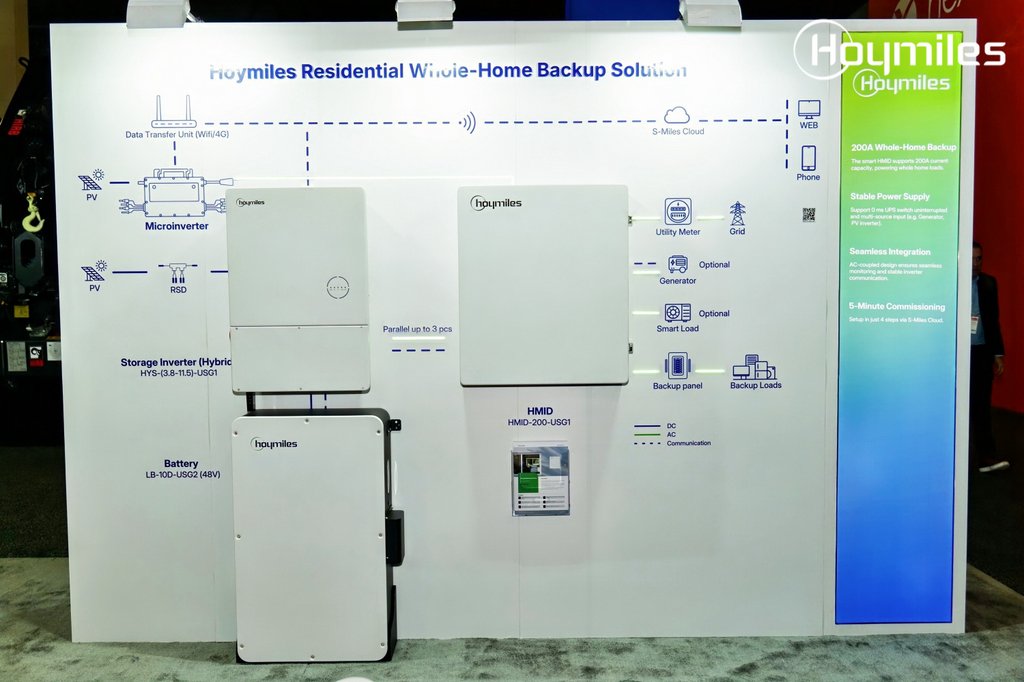Report on the Saudi Arabian Home Energy Management System Market and its Alignment with Sustainable Development Goals (SDGs)
Market Overview and Projections
The Home Energy Management System (HEMS) market in Saudi Arabia is projected to experience substantial growth, with an estimated value of US$ 43.62 Million in 2024 forecast to increase to US$ 145.69 Million by 2033. This represents a Compound Annual Growth Rate (CAGR) of 14.34% for the period from 2025 to 2033. This expansion is intrinsically linked to Saudi Arabia’s Vision 2030, a strategic framework aimed at economic diversification and sustainable development. The adoption of HEMS is a critical component in achieving several United Nations Sustainable Development Goals (SDGs).
The proliferation of HEMS directly supports the following SDGs:
- SDG 7 (Affordable and Clean Energy): By enabling homeowners to monitor and optimize energy consumption, HEMS promotes energy efficiency, making energy more affordable and sustainable.
- SDG 11 (Sustainable Cities and Communities): The integration of HEMS into residential buildings is fundamental to developing smart, energy-efficient housing and sustainable urban environments.
- SDG 13 (Climate Action): Reduced energy consumption leads to a corresponding decrease in carbon emissions, contributing directly to national and global climate change mitigation efforts.
The market’s development is further propelled by the integration of advanced technologies such as the Internet of Things (IoT), Artificial Intelligence (AI), and smart meters. These innovations facilitate real-time energy monitoring and automated adjustments, enhancing grid stability and efficiency, which aligns with SDG 9 (Industry, Innovation, and Infrastructure) by building resilient and technologically advanced infrastructure.
Key Growth Drivers and SDG Alignment
Government Policies and Energy Efficiency Incentives
The Saudi Arabian government is actively fostering an environment conducive to HEMS adoption through policies aligned with Vision 2030. These initiatives are designed to accelerate progress towards key SDGs.
- Contribution to SDG 7 and SDG 11: National strategies, including those implemented by the National Energy Services Company (Tarshid), focus on enhancing energy performance in the residential sector. By mandating energy-efficient technologies in new constructions and providing incentives for retrofitting existing buildings, the government is directly advancing the goals of ensuring access to affordable, reliable, sustainable energy and creating sustainable communities.
- Regulatory Support: Government measures create a stable regulatory framework that encourages long-term investment in smart energy solutions, driving market demand and supporting a nationwide transition to sustainable energy practices.
Growing Emphasis on Sustainability and Carbon Emission Reduction
A heightened global and national focus on environmental sustainability is a primary driver for the HEMS market, directly supporting climate-related SDGs.
- Alignment with SDG 13 (Climate Action): Saudi Arabia’s commitment to achieving net-zero emissions by 2060 necessitates significant reductions in energy consumption. HEMS provide homeowners with the tools to actively manage their energy use, thereby reducing their carbon footprint and contributing to the nation’s climate objectives.
- Support for SDG 12 (Responsible Consumption and Production): By raising consumer awareness of energy usage patterns, HEMS promotes a culture of responsible consumption. These systems empower individuals to make informed decisions that align with sustainable living principles, fostering a shift towards more efficient resource management.
Technological Advancements in IoT and AI
Technological innovation is a cornerstone of the HEMS market’s expansion, creating the infrastructure necessary for a smart and sustainable energy future.
- Fostering SDG 9 (Industry, Innovation, and Infrastructure): The integration of AI and IoT into home energy management represents a significant advancement in digital infrastructure. AI-driven analytics, smart thermostats, and connected appliances automate and optimize energy consumption, showcasing innovation that is crucial for modern, resilient infrastructure.
- Enhancing SDG 7 and SDG 11: These technologies make sophisticated energy management more accessible and convenient for consumers. By providing personalized energy-saving recommendations and automating device controls, they enhance the efficiency and sustainability of homes, contributing to the development of smart cities and ensuring access to clean energy.
Market Challenges and SDG Implications
Reliance on Consistent Internet Access
The operational efficacy of HEMS is highly dependent on reliable internet connectivity for real-time data processing, remote control, and cloud analytics. Disparities in internet access present a significant challenge to the equitable adoption of this technology.
- Impact on SDG 7 and SDG 11: Inconsistent internet service, particularly in rural or underserved areas, can limit the functionality of HEMS, creating a digital divide. This barrier hinders the goal of ensuring universal access to affordable energy and the development of inclusive, sustainable communities, as the benefits of energy efficiency may not be accessible to all residents.
Market Fragmentation and Lack of Standardization
The HEMS market is characterized by a wide array of products from various manufacturers, often operating on proprietary platforms. This lack of standardization creates interoperability issues and complicates integration for consumers.
- Impediment to SDG 9: The absence of industry-wide standards for interoperability acts as a barrier to innovation and the development of a seamless, integrated infrastructure. This fragmentation can slow market growth and hinder the full potential of smart grid technologies.
- Slowing Progress on SDGs 7, 11, and 13: Compatibility challenges can increase the complexity and cost of HEMS for consumers, potentially discouraging widespread adoption. This delay would consequently slow progress towards achieving national goals for energy efficiency, sustainable cities, and climate action.
Key Market Players
The Saudi Arabian Home Energy Management System market includes several prominent international technology and engineering firms. Key players contributing to the market’s development include:
- Honeywell International, Inc.
- General Electric Company
- Comcast Cable (Xfinity)
- Panasonic Corporation
- Johnson Controls
- Schneider Electric SE
- Robert Bosch GmbH
1. Which SDGs are addressed or connected to the issues highlighted in the article?
-
SDG 7: Affordable and Clean Energy
The article’s central theme is the adoption of Home Energy Management Systems (HEMS) to improve energy efficiency in the residential sector. This directly supports the goal of ensuring access to affordable, reliable, sustainable, and modern energy for all by focusing on optimizing energy use.
-
SDG 9: Industry, Innovation, and Infrastructure
The growth of the HEMS market is driven by technological advancements like the Internet of Things (IoT), Artificial Intelligence (AI), and smart grids. The article also highlights infrastructure challenges, such as the need for consistent internet access and industry-wide standards, which are key components of this goal.
-
SDG 11: Sustainable Cities and Communities
By promoting technology that helps homeowners monitor, control, and reduce their electricity consumption, the article addresses the sustainability of residential areas. The focus on smart homes and reducing the environmental impact of households contributes to making cities more inclusive, safe, resilient, and sustainable.
-
SDG 12: Responsible Consumption and Production
The article discusses a shift in consumer awareness towards sustainability and the benefits of managing household energy consumption. HEMS enable more responsible consumption patterns by providing tools to lower power use and reduce environmental impact.
-
SDG 13: Climate Action
A primary driver for the HEMS market mentioned in the article is the growing focus on sustainability and reducing carbon emissions. It explicitly links the adoption of these systems to Saudi Arabia’s national goal of achieving net-zero emissions by 2060, which is a direct climate action measure.
2. What specific targets under those SDGs can be identified based on the article’s content?
-
SDG 7: Affordable and Clean Energy
-
Target 7.3: By 2030, double the global rate of improvement in energy efficiency.
Explanation: The article emphasizes that HEMS are used for “optimal energy use” and enable homeowners to “lower their power use.” The entire premise of the HEMS market growth is based on improving energy efficiency in the residential sector, directly aligning with this target.
-
Target 7.3: By 2030, double the global rate of improvement in energy efficiency.
-
SDG 9: Industry, Innovation, and Infrastructure
-
Target 9.4: By 2030, upgrade infrastructure and retrofit industries to make them sustainable, with increased resource-use efficiency and greater adoption of clean and environmentally sound technologies and industrial processes.
Explanation: The article mentions government initiatives that “encourage energy retrofits” and “upgrading existing structures.” The adoption of HEMS, which are based on “smart technology,” “IoT,” and “AI,” represents the move towards clean and environmentally sound technologies to increase resource-use efficiency. -
Target 9.1: Develop quality, reliable, sustainable and resilient infrastructure… to support economic development and human well-being.
Explanation: The article identifies a key challenge: HEMS “rely significantly on reliable internet connectivity.” It points out that “certain isolated or rural areas still struggle with access,” highlighting the need to develop resilient and reliable broadband infrastructure to ensure equitable access to these energy-saving technologies.
-
Target 9.4: By 2030, upgrade infrastructure and retrofit industries to make them sustainable, with increased resource-use efficiency and greater adoption of clean and environmentally sound technologies and industrial processes.
-
SDG 11: Sustainable Cities and Communities
-
Target 11.6: By 2030, reduce the adverse per capita environmental impact of cities, including by paying special attention to air quality and municipal and other waste management.
Explanation: The article states that HEMS lead to a “smaller environmental effect” and help homeowners “lessen their environmental impact.” By focusing on reducing energy consumption in homes, these systems directly contribute to lowering the per capita environmental footprint of urban areas.
-
Target 11.6: By 2030, reduce the adverse per capita environmental impact of cities, including by paying special attention to air quality and municipal and other waste management.
-
SDG 13: Climate Action
-
Target 13.2: Integrate climate change measures into national policies, strategies and planning.
Explanation: The article explicitly states that the HEMS market is driven by Saudi Arabia’s “larger drive toward sustainability and energy efficiency under Vision 2030” and its goal to meet “net-zero emissions by 2060.” This demonstrates the integration of climate action goals into national strategy and planning.
-
Target 13.2: Integrate climate change measures into national policies, strategies and planning.
3. Are there any indicators mentioned or implied in the article that can be used to measure progress towards the identified targets?
-
For Target 7.3 (Energy Efficiency)
-
Implied Indicator: Rate of adoption of energy-efficient technologies in the residential sector.
Explanation: The article provides market value projections for the HEMS market, showing an expected growth from “US$ 43.62 Million in 2024” to “US$ 145.69 Million by 2033” with a “CAGR of 14.34%.” This financial growth serves as a proxy indicator for the increased adoption of energy efficiency technologies in homes.
-
Implied Indicator: Rate of adoption of energy-efficient technologies in the residential sector.
-
For Target 9.4 (Sustainable Infrastructure and Technology)
-
Implied Indicator: Level of investment in and deployment of smart technologies (IoT, AI) for energy management.
Explanation: The article identifies “IoT and AI technological advancements” as a key driver. The growth of the HEMS market, which integrates these technologies, indicates progress in adopting environmentally sound technologies for resource efficiency.
-
Implied Indicator: Level of investment in and deployment of smart technologies (IoT, AI) for energy management.
-
For Target 13.2 (Integration of Climate Policies)
-
Mentioned Indicator: Existence of national strategies for climate change mitigation.
Explanation: The article directly mentions the existence of such strategies, citing “national plans in line with Vision 2030” and the national goal of “net-zero emissions by 2060” as key factors driving the market. This confirms that integrated policies and plans are in place.
-
Mentioned Indicator: Existence of national strategies for climate change mitigation.
-
For Target 9.1 (Resilient Infrastructure)
-
Implied Indicator: Nationwide broadband internet coverage and reliability.
Explanation: The article identifies the “Reliance on Consistent Internet Access” as a major challenge, noting that “certain isolated or rural areas still struggle with access.” Progress towards this target could be measured by tracking the reduction of this digital divide and the expansion of reliable internet, which is essential for HEMS functionality.
-
Implied Indicator: Nationwide broadband internet coverage and reliability.
4. Table of SDGs, Targets, and Indicators
| SDGs | Targets | Indicators (Mentioned or Implied in the Article) |
|---|---|---|
| SDG 7: Affordable and Clean Energy | 7.3: Double the rate of improvement in energy efficiency. | The projected market growth of HEMS from US$ 43.62 Million in 2024 to US$ 145.69 Million by 2033, indicating increased adoption of energy efficiency technology. |
| SDG 9: Industry, Innovation, and Infrastructure | 9.4: Upgrade infrastructure and retrofit industries for sustainability and resource-use efficiency. | Adoption of “smart technology,” “IoT,” and “AI” in homes; government initiatives for “energy retrofits” and “upgrading existing structures.” |
| SDG 9: Industry, Innovation, and Infrastructure | 9.1: Develop quality, reliable, sustainable and resilient infrastructure. | The identified challenge of HEMS’ “Reliance on Consistent Internet Access,” implying that nationwide broadband coverage is a necessary indicator of progress. |
| SDG 11: Sustainable Cities and Communities | 11.6: Reduce the adverse per capita environmental impact of cities. | The use of HEMS to achieve a “smaller environmental effect” and “lessen their environmental impact” in residential settings. |
| SDG 13: Climate Action | 13.2: Integrate climate change measures into national policies, strategies and planning. | The existence of “national plans in line with Vision 2030” and the goal of “net-zero emissions by 2060” as drivers for the HEMS market. |
Source: globenewswire.com







